RadRunner Wiring Harness Replacement Guide
The wiring harness connects various electrical components on the bike and can be replaced in the unlikely event it is damaged or determined to be non-functional by Rad Power Bikes Product Support.
The wiring harness replacement involves unplugging the connectors, removing the harness from the downtube and replacing it with a new one, and plugging in the connectors.
Tools needed:
- Flat side cutters
- 4 mm Allen wrench
- 8 mm wrench
- String (several inches longer than the length of the downtube)
- Electrical tape
- Scissors
- A few replacement zip ties
- The replacement wiring harness from Rad Power Bikes.
- Power off the bike, remove the battery, and discharge residual power. Press and release the power button and use the battery key to turn the battery key barrel to the off-and-unlocked position. Remove the key, then remove the battery. Press and release the power button to discharge residual power.
- Remove the cable cover and set it aside.
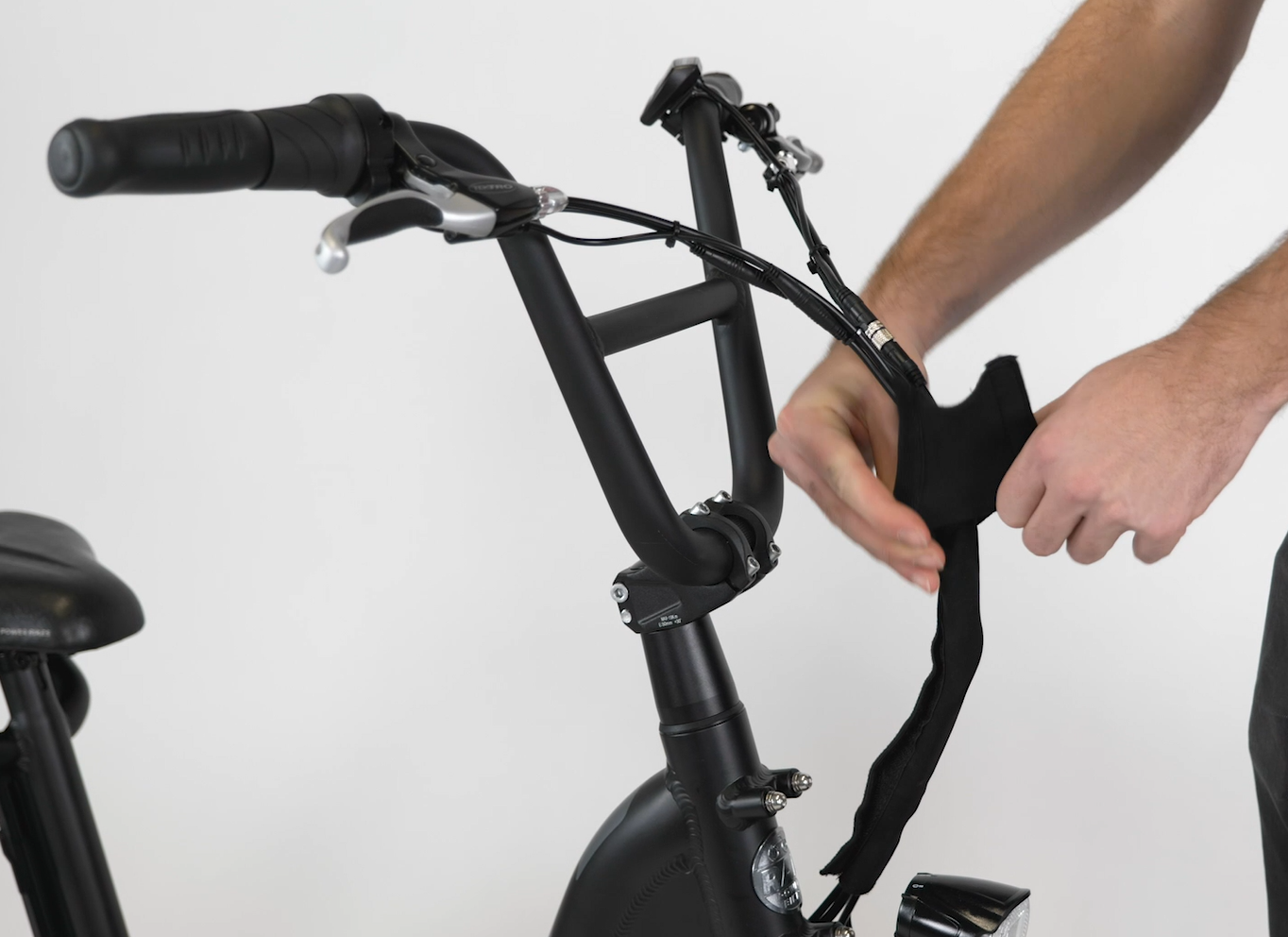
- Unplug the throttle, headlight, and both brake connectors from the wiring harness by pulling the connectors directly apart without twisting. Snip zip ties as needed. Unplug the display connector by first unscrewing the silver metal portion of the connector until the threaded portion releases, then pulling directly apart without twisting.
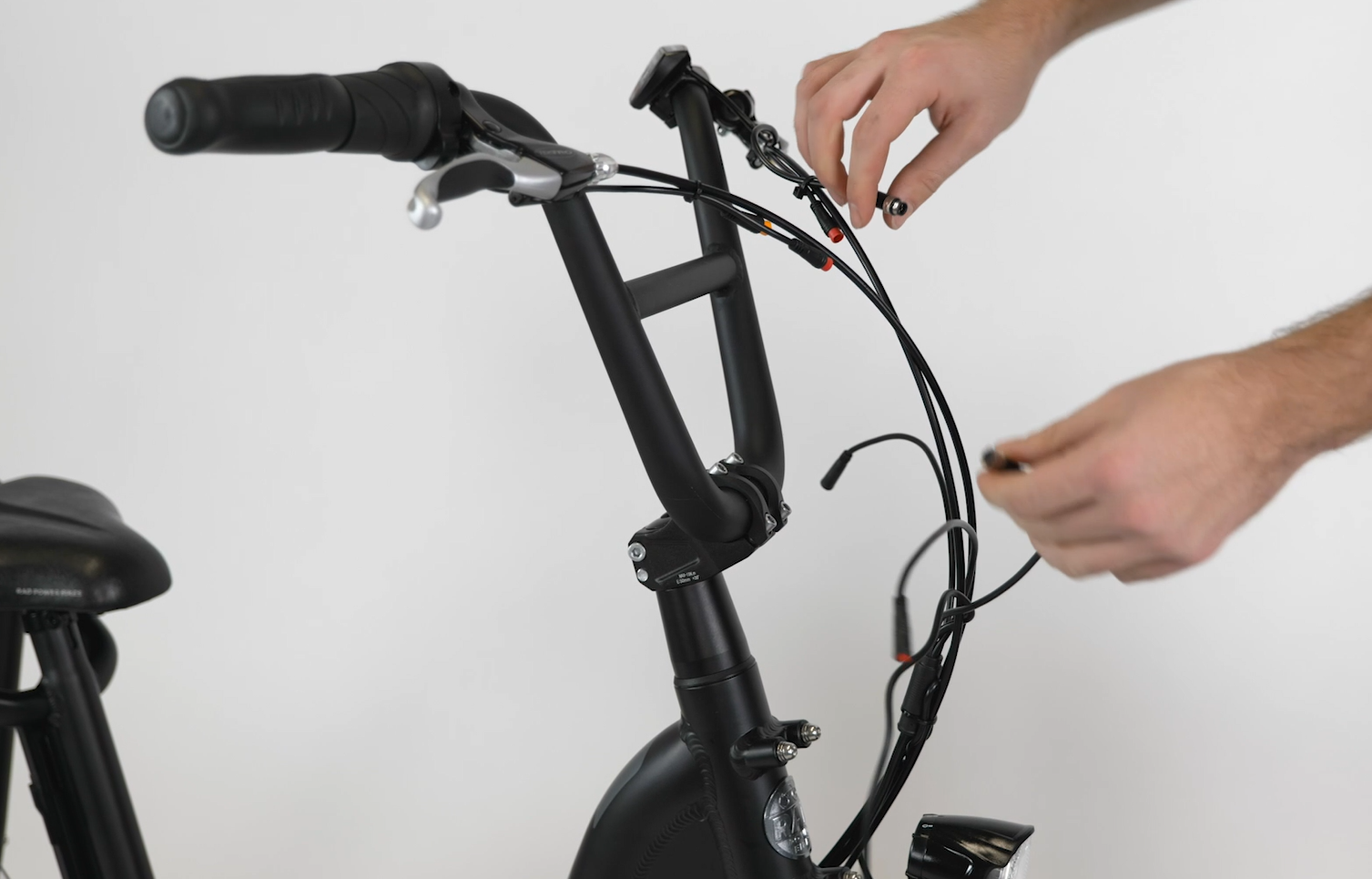
- Remove the skid plate mounting bolts and hardware to access the wiring harness connector.
- Remove the rear skid plate mounting bolt, locknut, washer, and spacer. Use a 4 mm Allen wrench from the top and an 8 mm wrench on the locknut under the skid plate (near the kickstand).
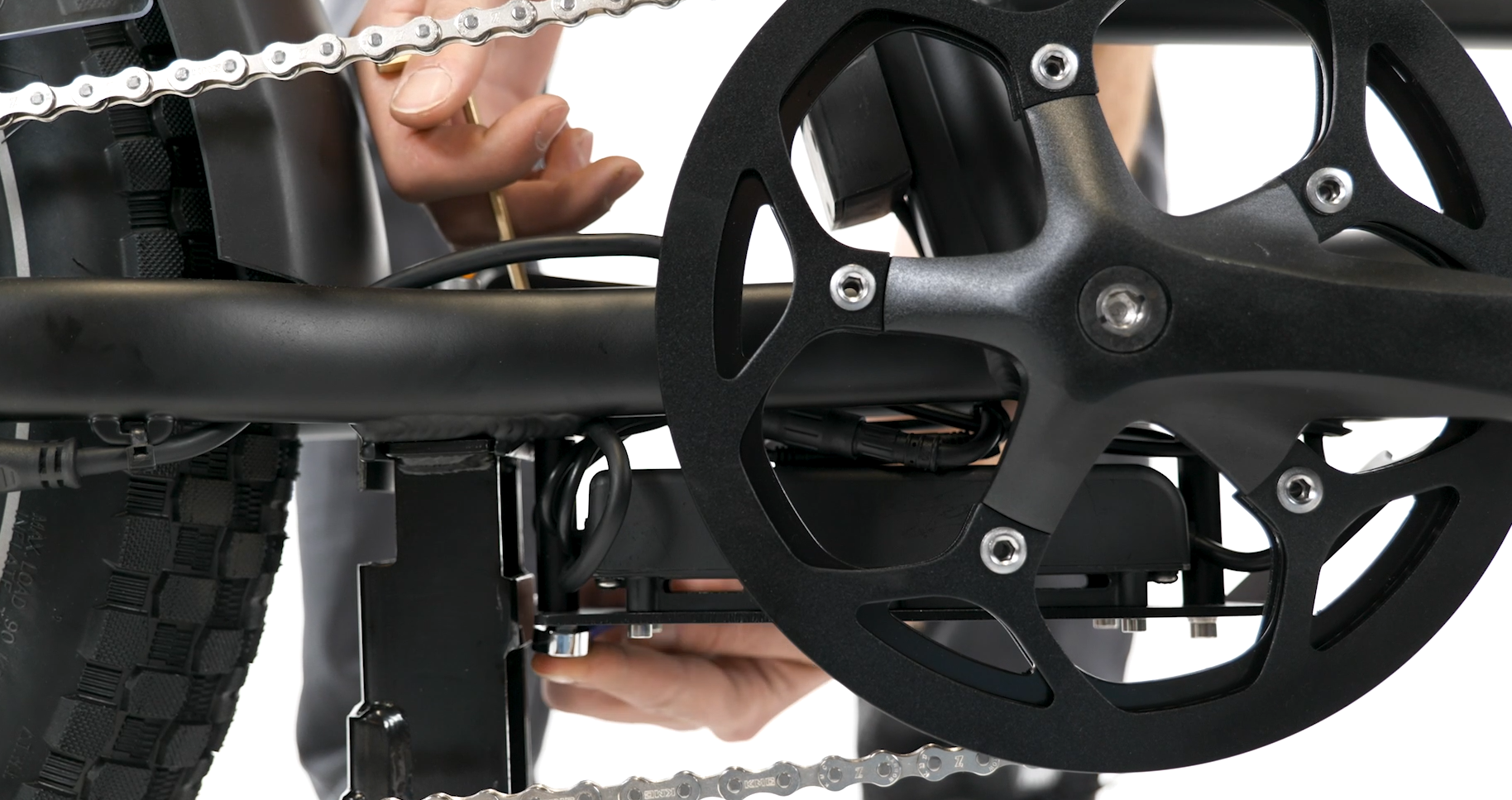
- Remove the front skid plate mounting bolt, spacer, flat washer, and split washer. Insert a 4 mm Allen wrench into the bolt head fully from below the skid plate (near the bent end). Apply constant pressure and turn the wrench slowly to prevent stripping the bolt head.
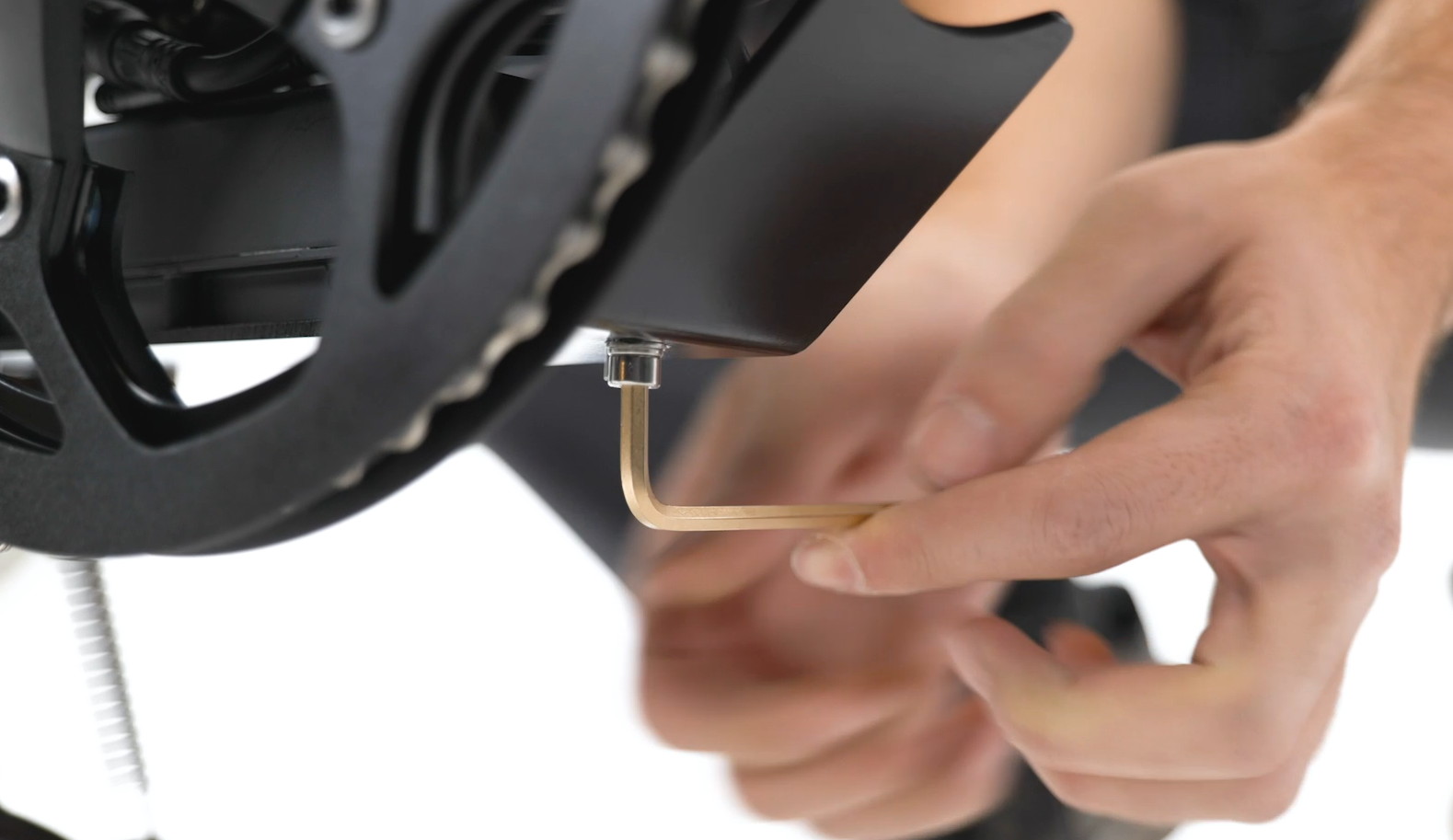
- Remove the rear skid plate mounting bolt, locknut, washer, and spacer. Use a 4 mm Allen wrench from the top and an 8 mm wrench on the locknut under the skid plate (near the kickstand).
- Turn the handlebar to the side, locate the wiring harness cable at the front of the bike, and gently feed the cable into the upper cable opening of the downtube to provide cable slack.
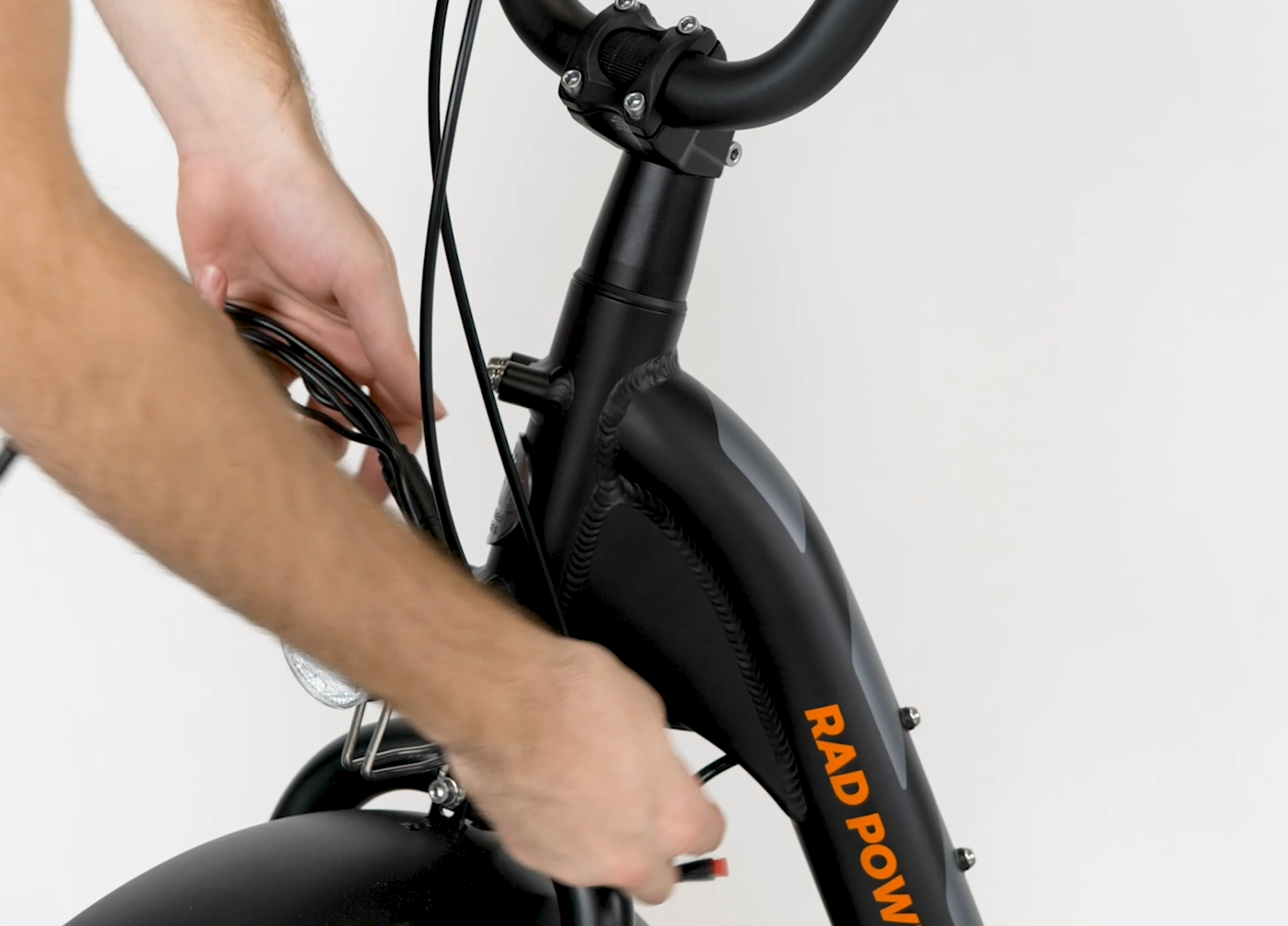
- Unseat the rubber grommets, starting with the grommet at the upper cable opening of the downtube. At the lower cable opening (in front of the bottom bracket), unseat the grommet and pass it over the connector and toward the controller.
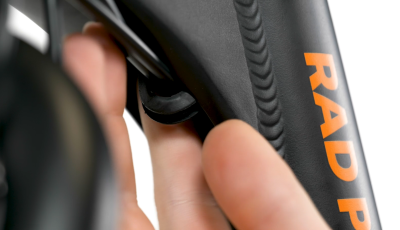
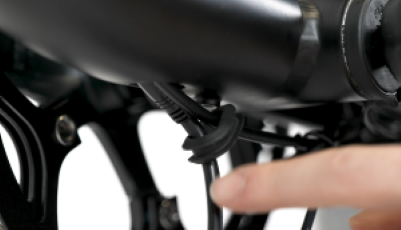
- Use caution to avoid unplugging the connector while it is still in the frame and gently pull the wiring harness cable out of the lower cable opening to access the connector.
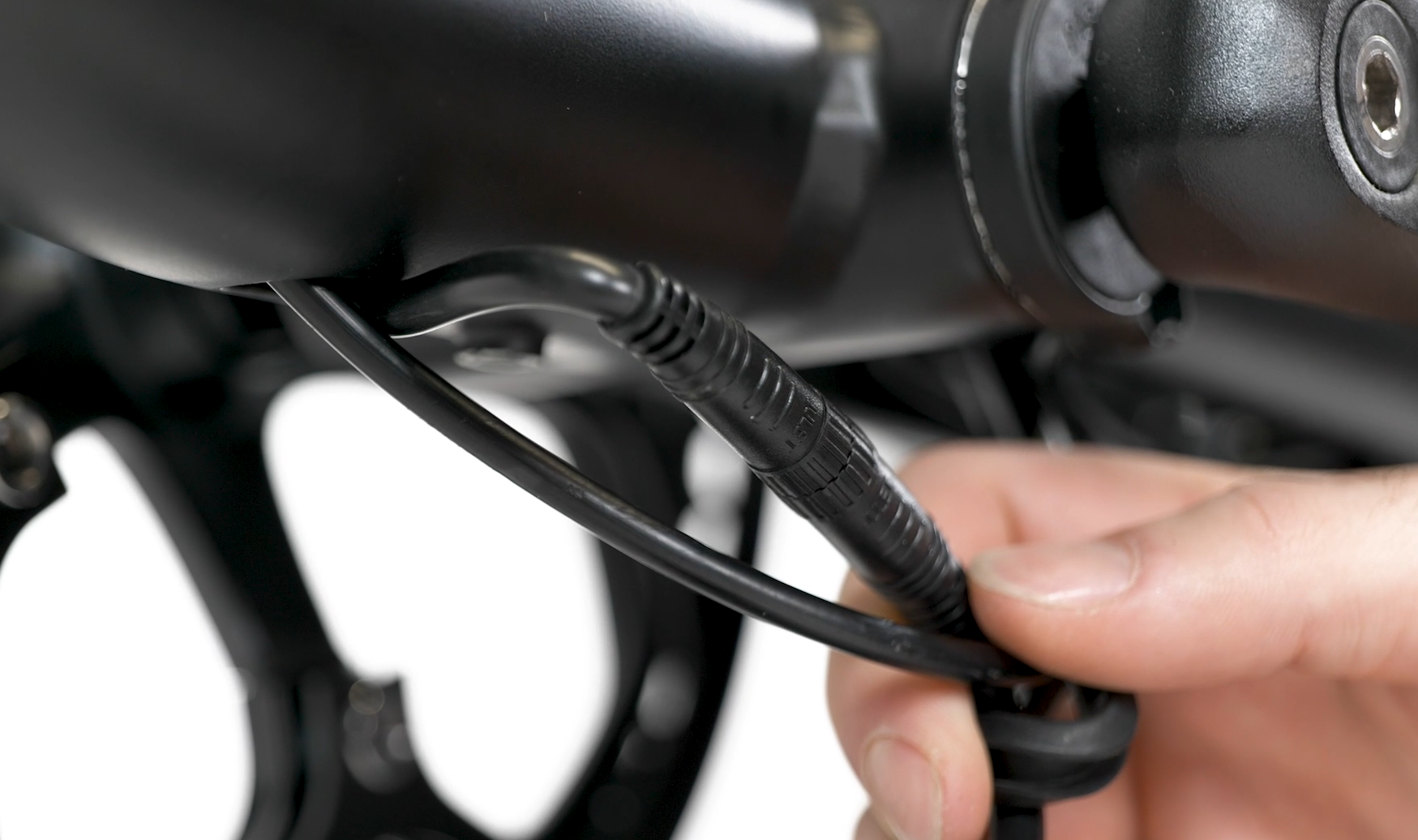
- Disconnect the wiring harness connector at the bottom of the downtube by pulling directly apart without twisting.
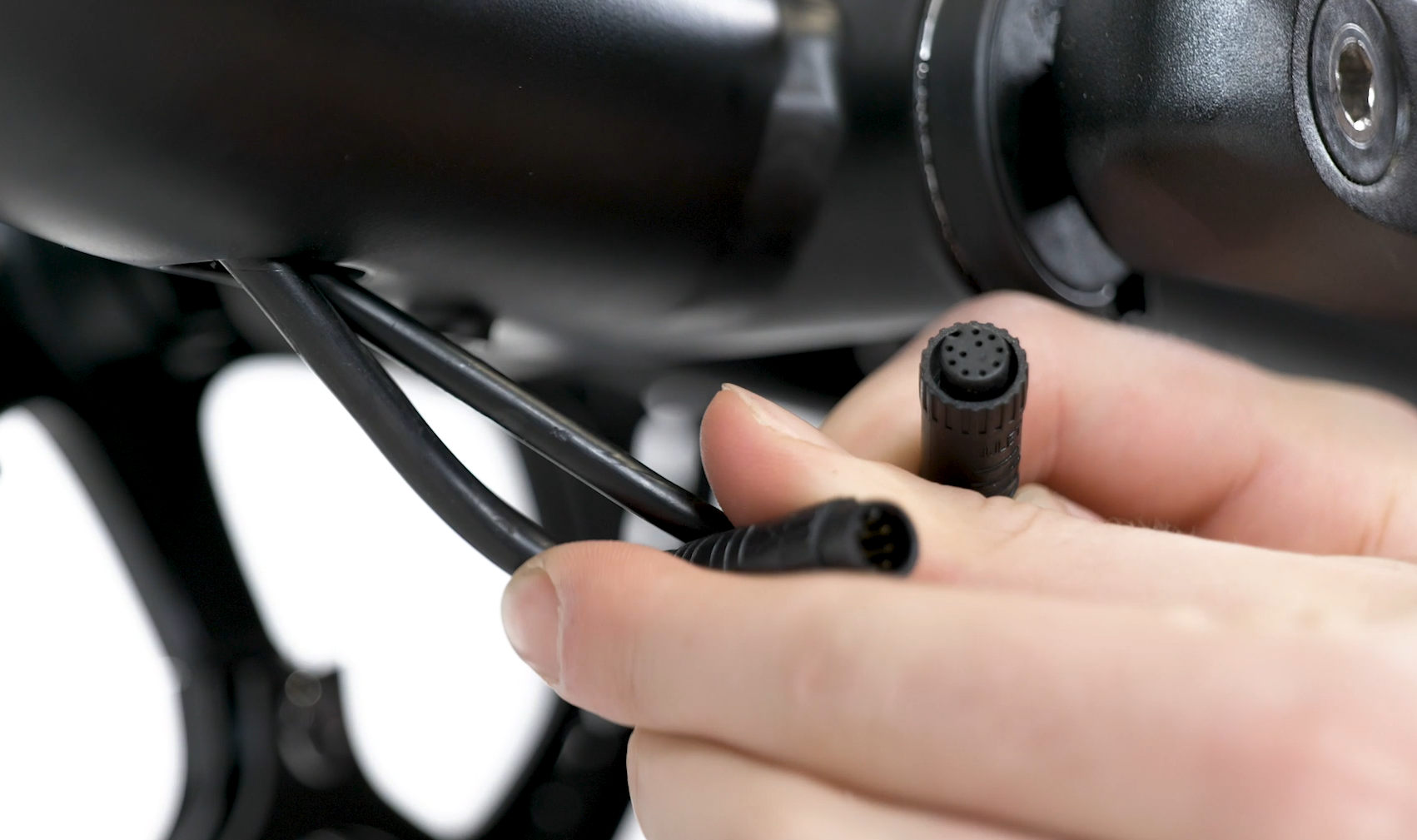
- Securely tie the string to the open connector coming out of the lower cable opening.
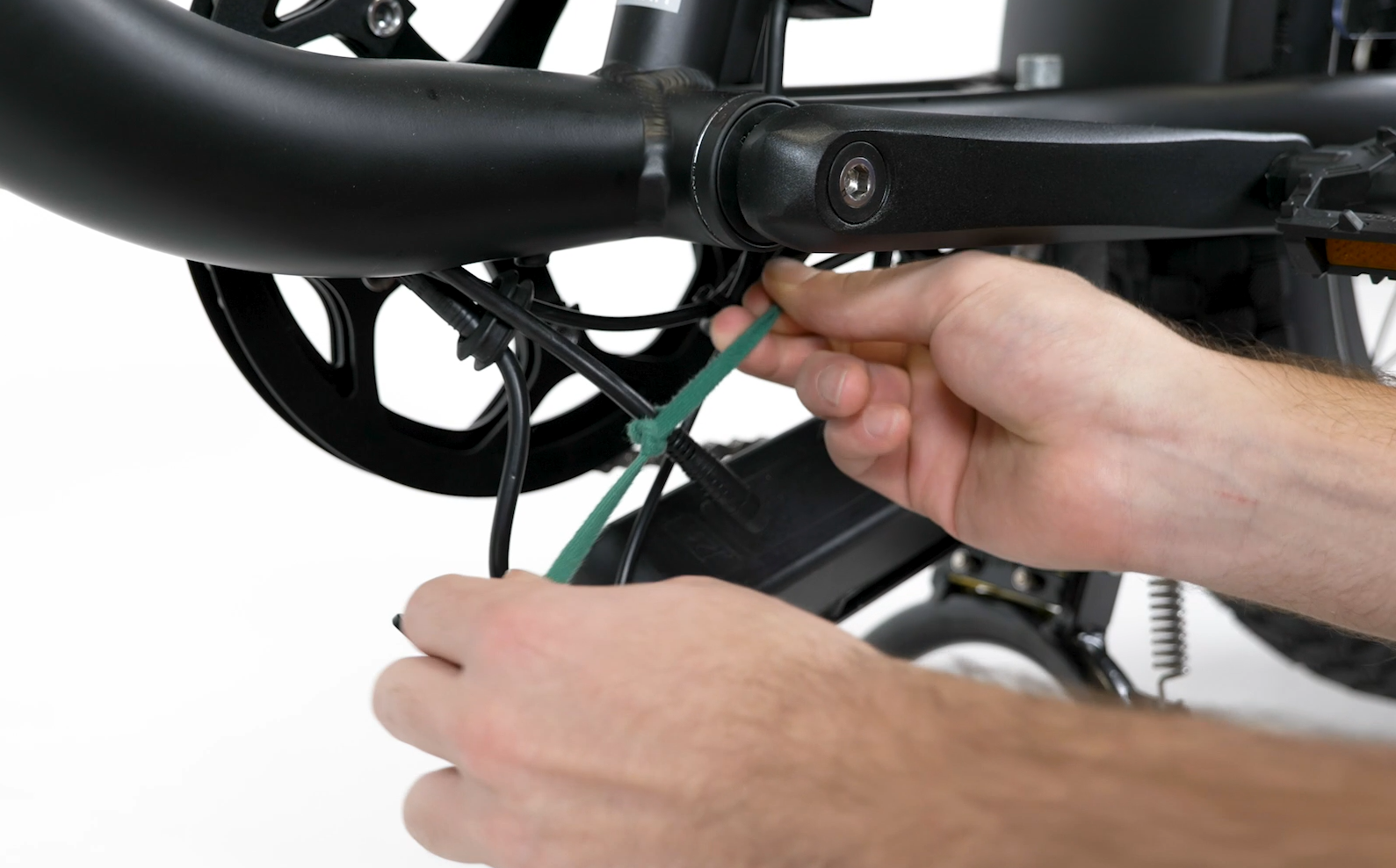
- Carefully pull the wiring harness cable out of the upper cable opening, ensuring the string comes out of both cable openings and remains inside the downtube (this will make it easier to pass the new wiring harness through and out of the downtube).

- Pass the grommet off the wiring harness connector and onto the string.
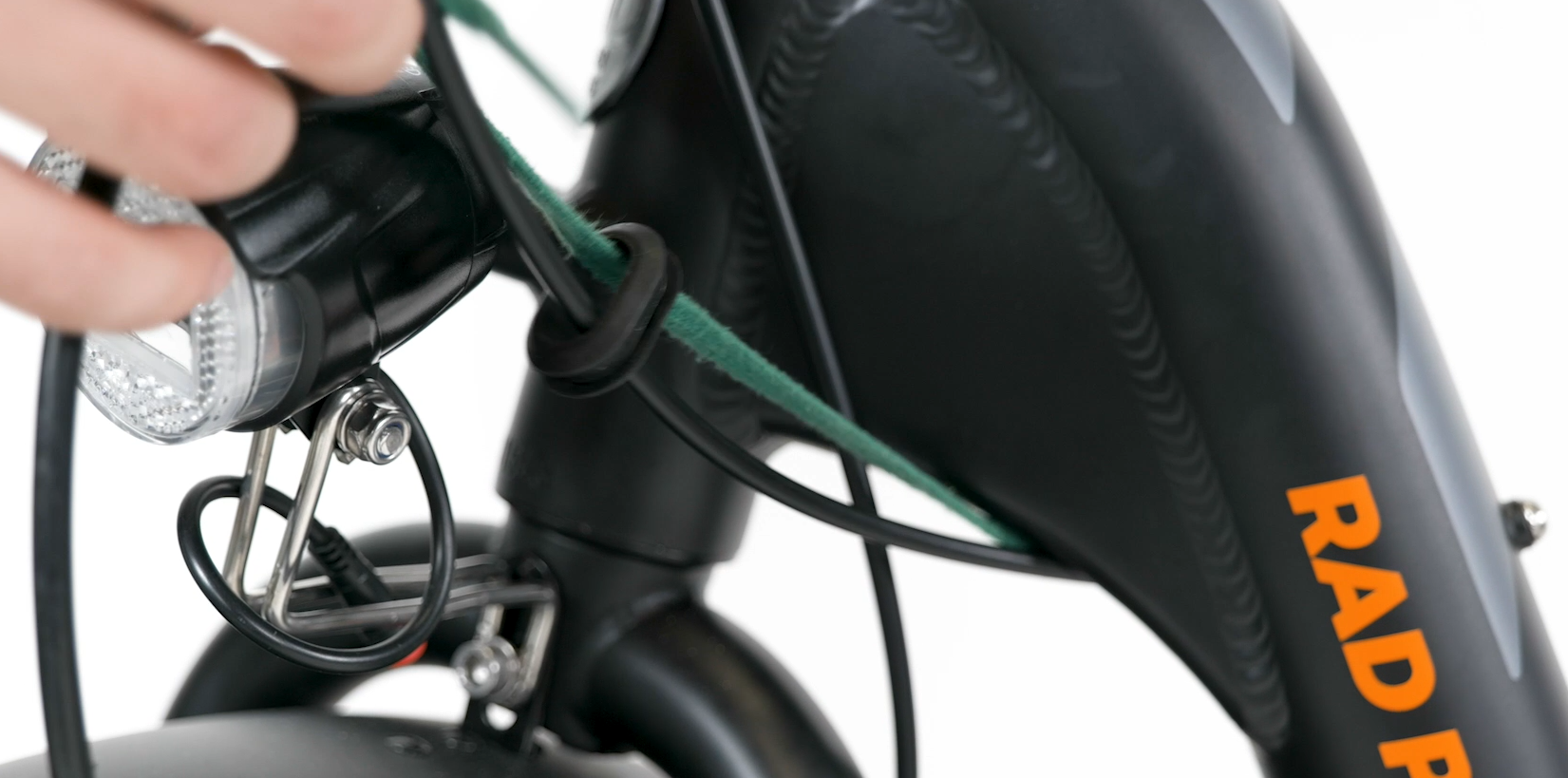
- Untie the string from the old wiring harness connector and allow the string to hang outside of both cable openings. Discard the old wiring harness in accordance with local electronics recycling regulations.
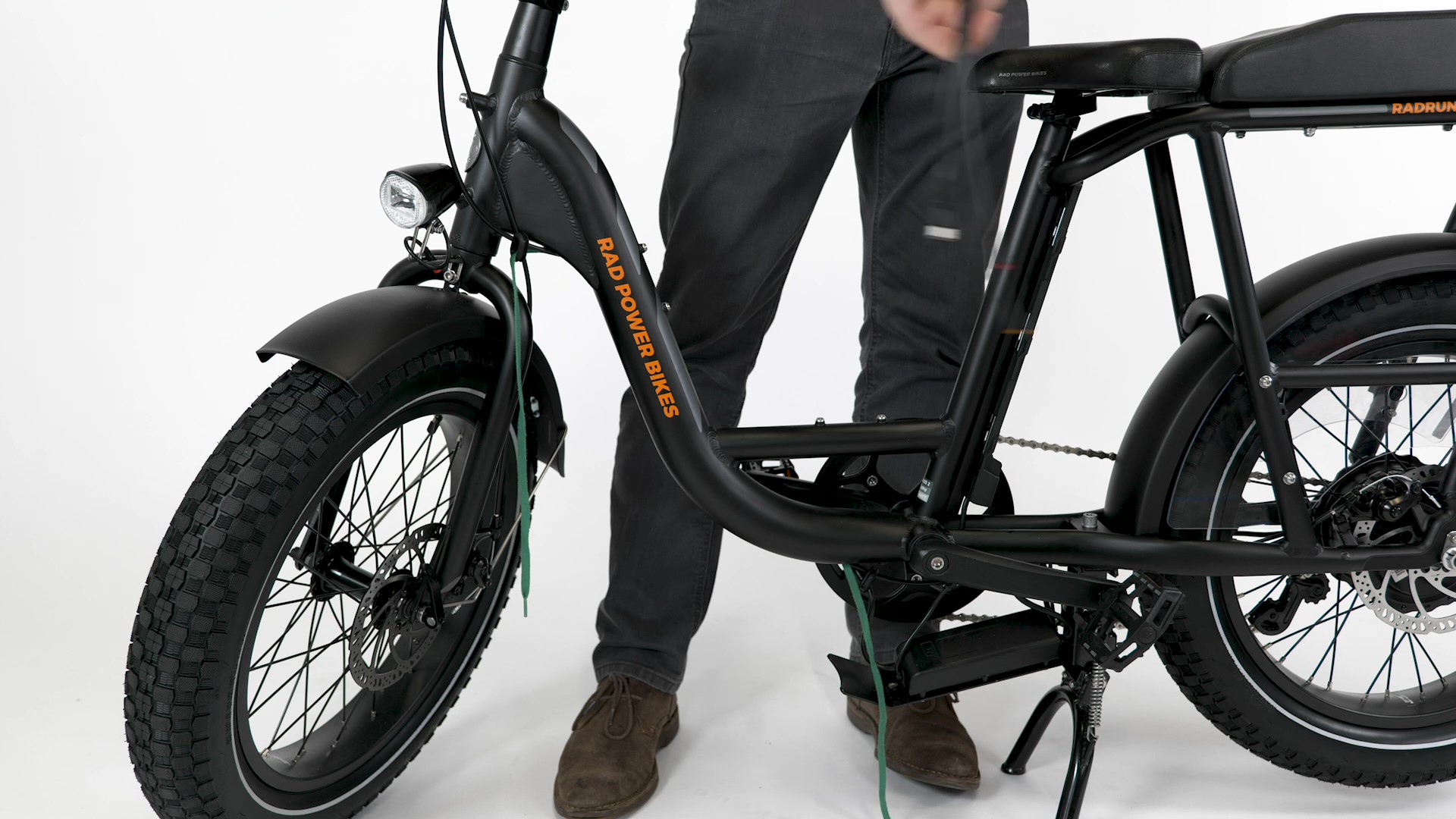
-
Tie the string coming out of the upper cable opening to the single-connector side of the new wiring harness, and secure the string to the connector end with electrical tape (which will make it easier to safely direct the new wiring harness’ connector end down the downtube and out of the lower cable opening).
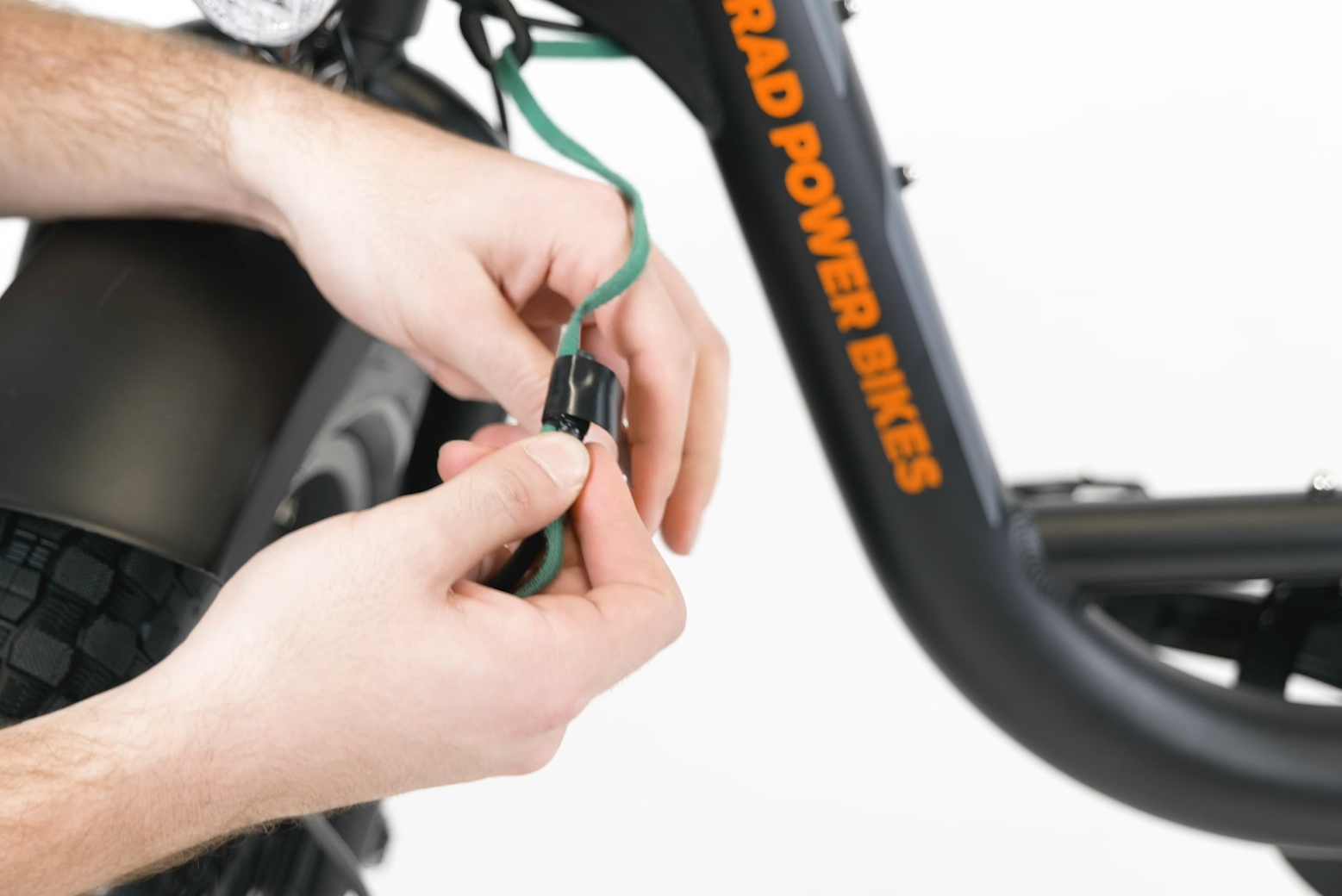
-
Pass the connector end through the rubber grommet and gently push the connector end into the downtube through the upper cable opening.

-
Carefully push the wiring harness cable into the downtube from the upper cable opening and gently pull the string at the lower cable opening to guide the wiring harness connector through the downtube, until the connector moves out of the opening.
Do NOT use any tools (other than the string and tape) to assist in directing the connector end out of the lower cable opening. Tools like pliers, screwdrivers, etc. can easily damage the connector pins and housing, especially when inserted from the lower cable opening upwards into the downtube.
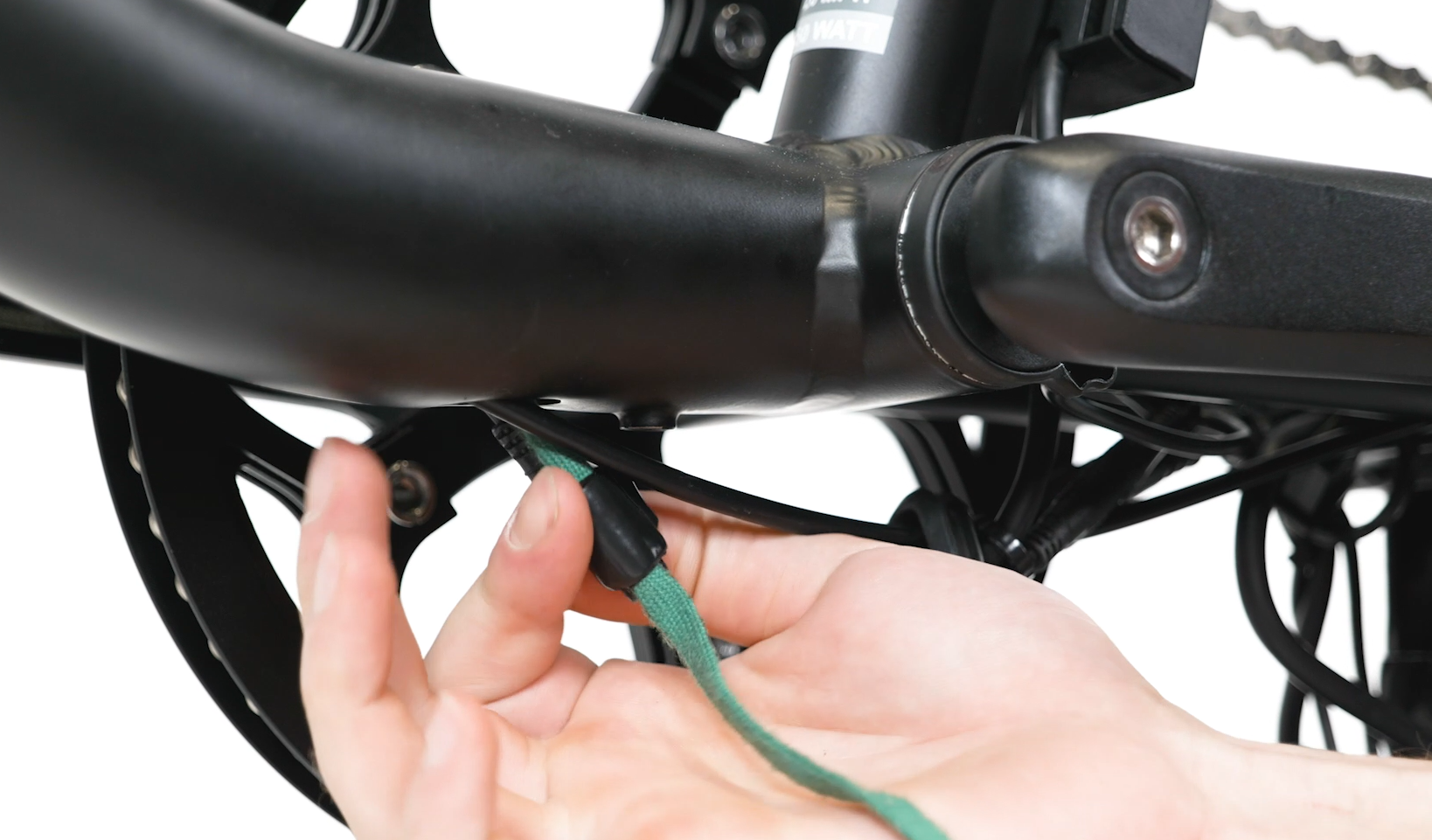
-
Remove the tape and untie the string from the connector end near the lower cable opening.
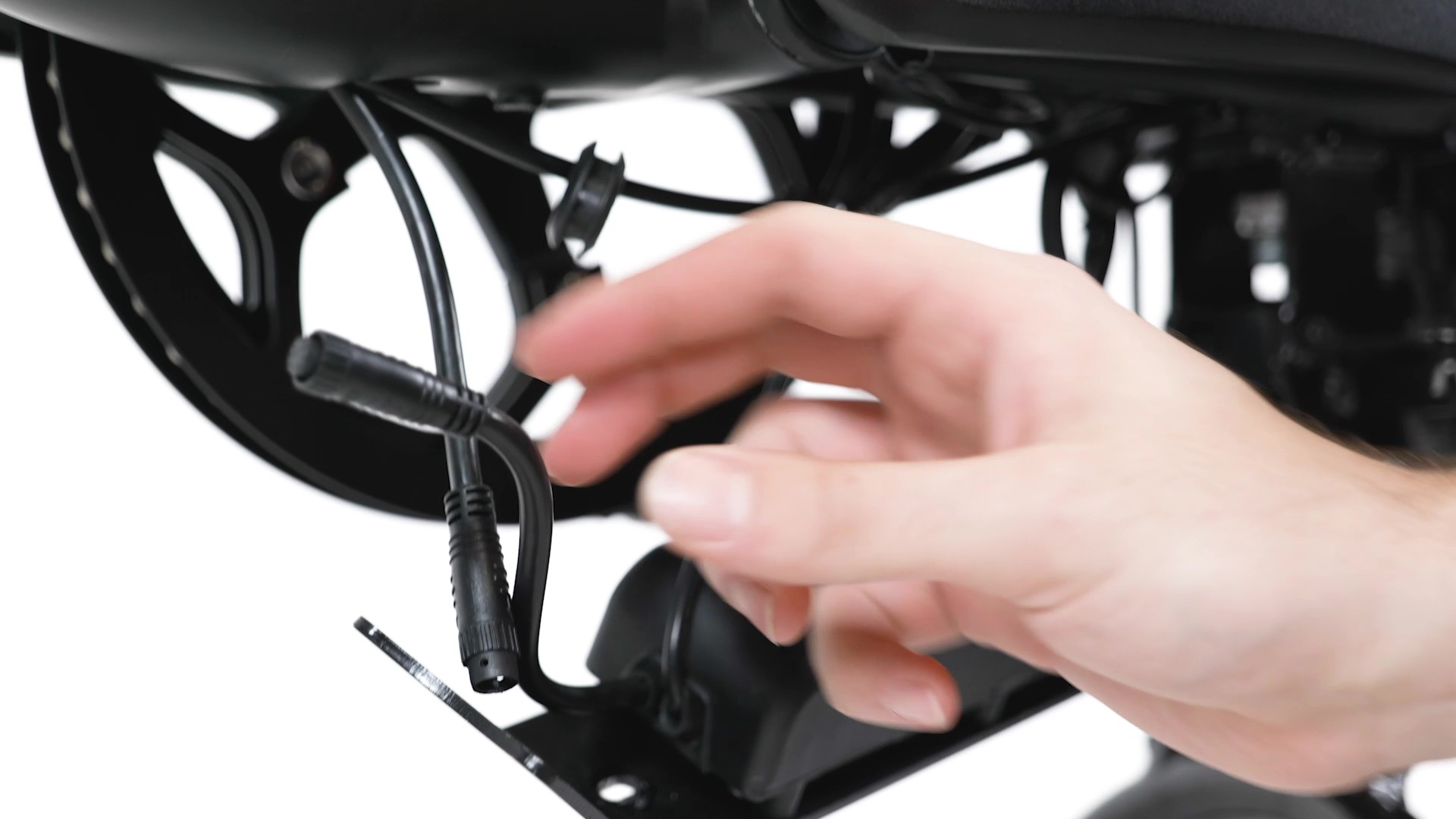
-
Plug in the wiring harness connector to the matching connector (on the cable coming out of the controller) near the bottom bracket. Align the internal notch and pins (and external arrows) and carefully press directly together without twisting to fully seat the connection.
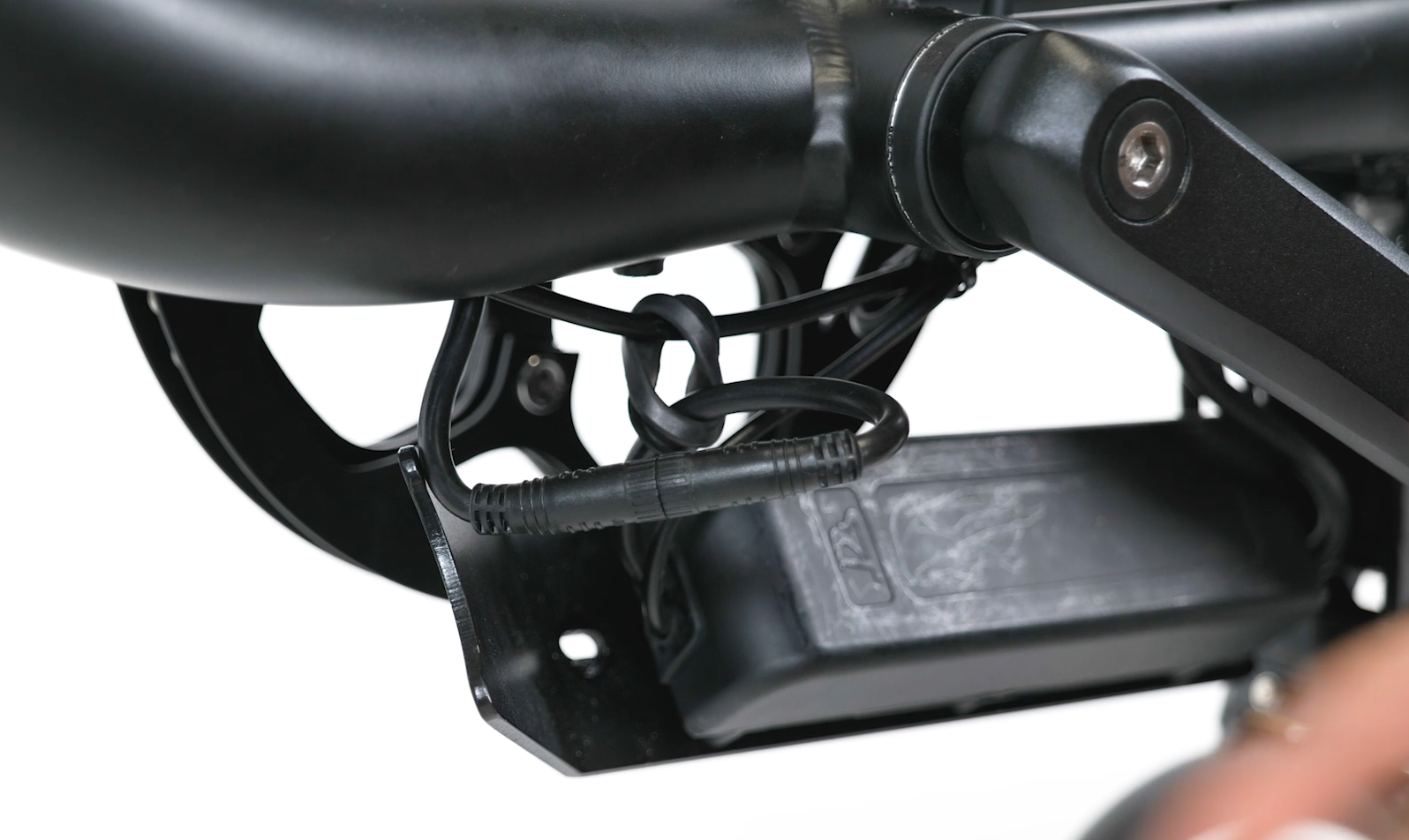
-
Push the connector into the downtube through the lower cable opening and reinstall the rubber grommet.
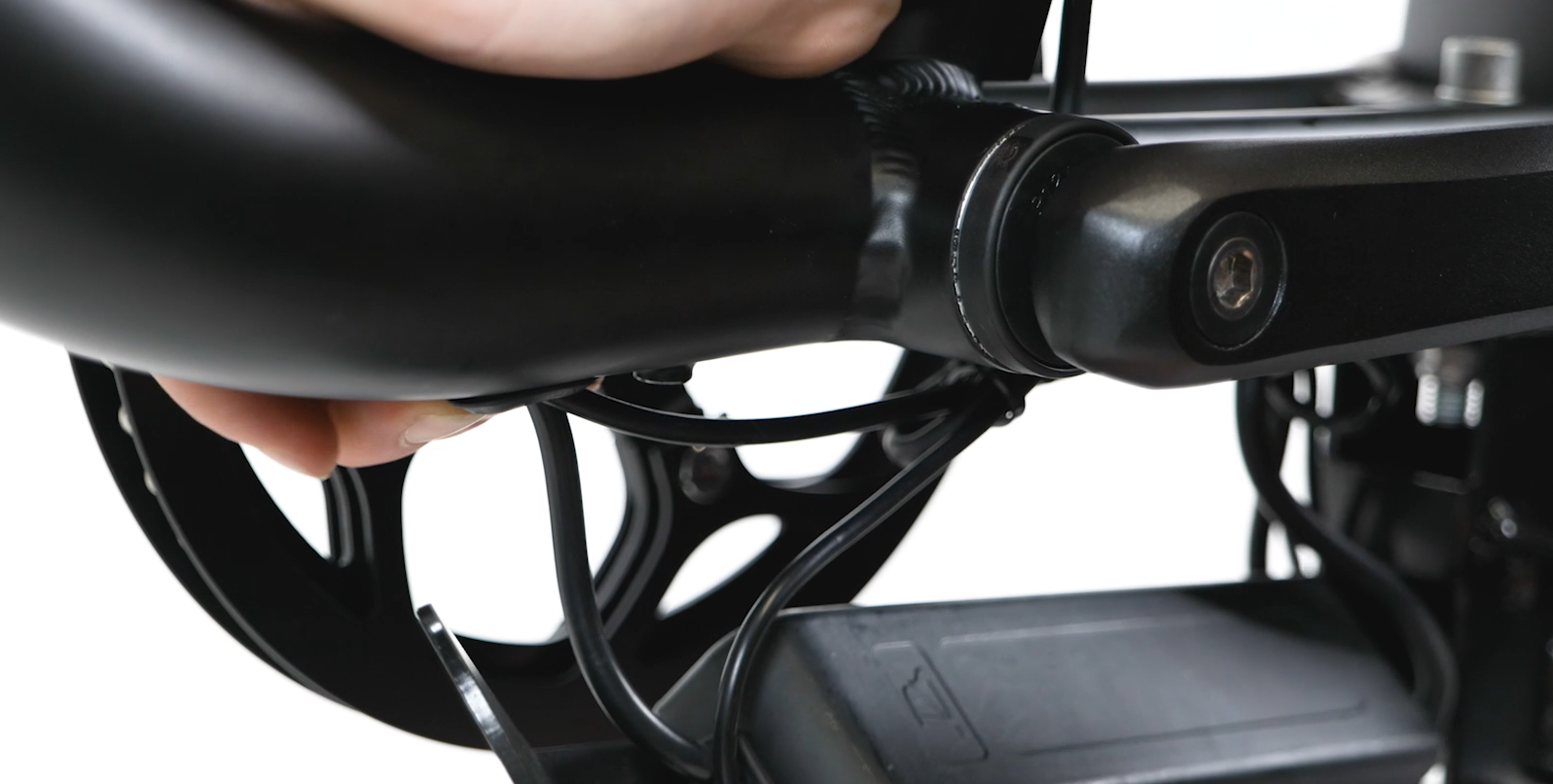
-
Carefully pull the wiring harness cable from the upper cable opening to afford cable slack at the front of the bike and reinstall the rubber grommet.
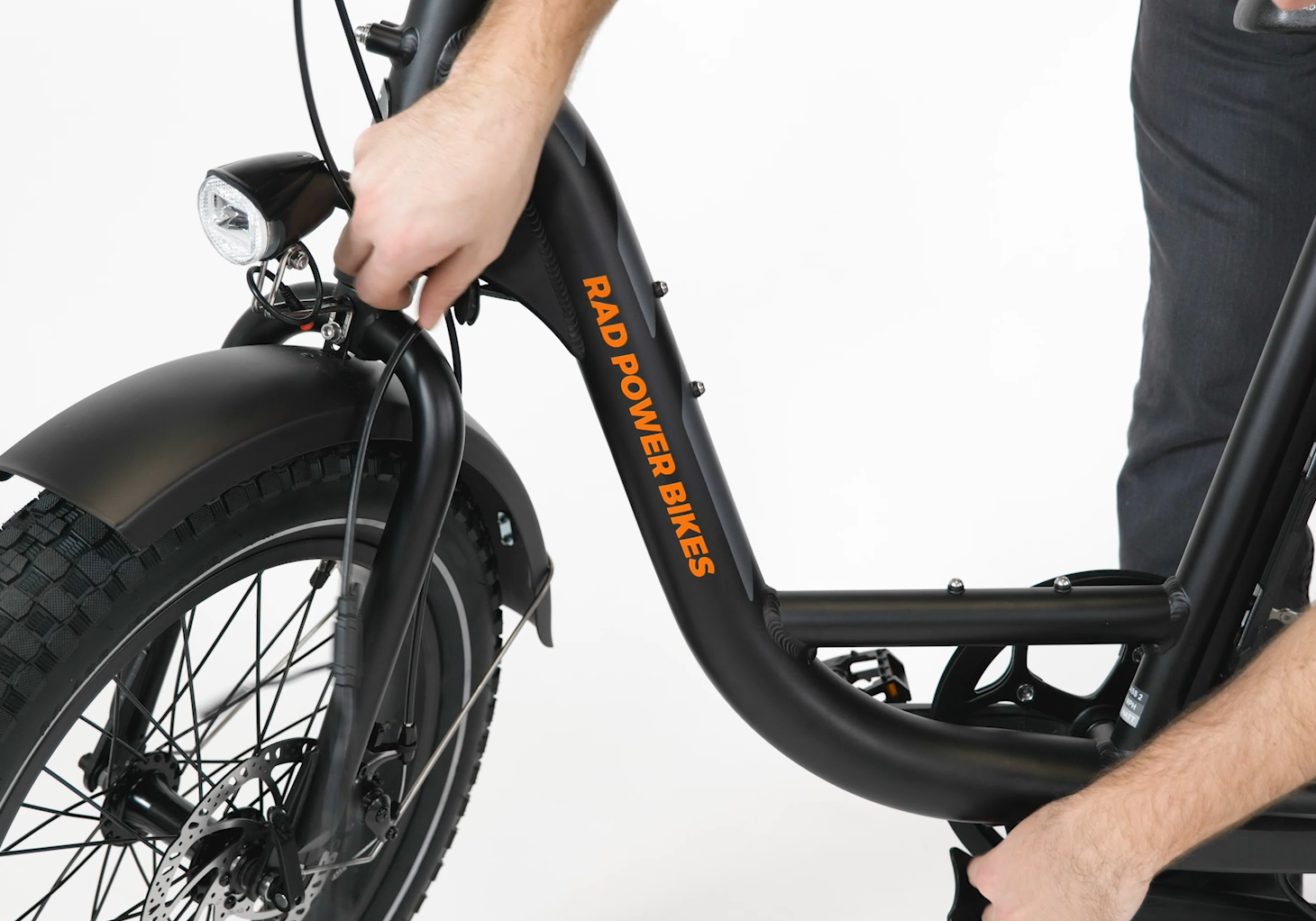
-
Plug in each connector to the wiring harness.
-
Plug in the display connector. Align the internal notch and pins, press each side directly together without twisting, then screw together each side of the threaded portion to fully seat the connection.
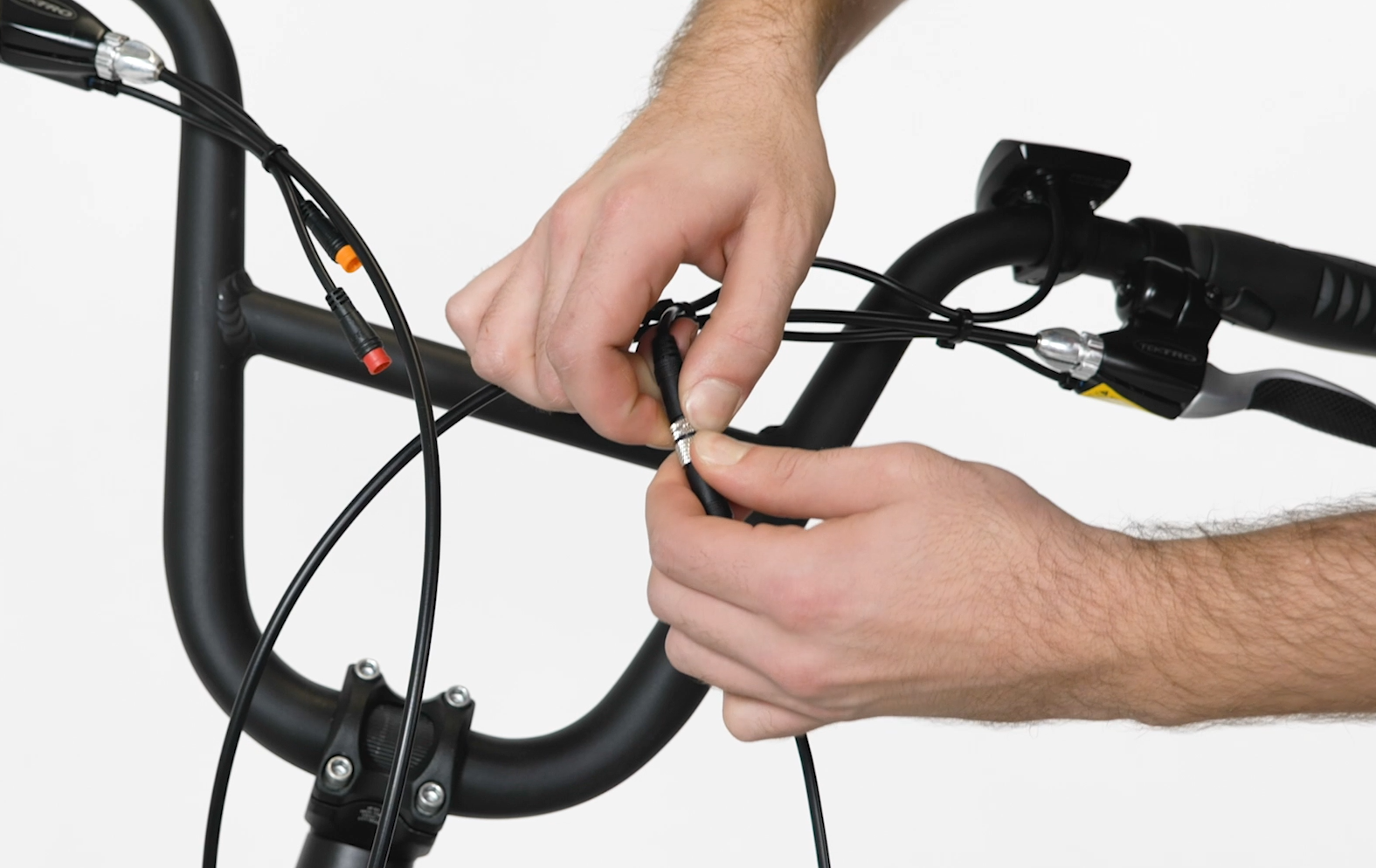
- Plug in the headlight connector. Trace the cable coming from the bottom of the wiring harness junction and locate the matching connector end coming out of the headlight. Line up the internal notch and pins (and external arrows) and press directly together, without twisting, to connect.
-
Plug in all other connectors. Locate the corresponding connector end, carefully align the internal notch and pins (and external arrows), and press each side directly together without twisting to fully seat the connection.
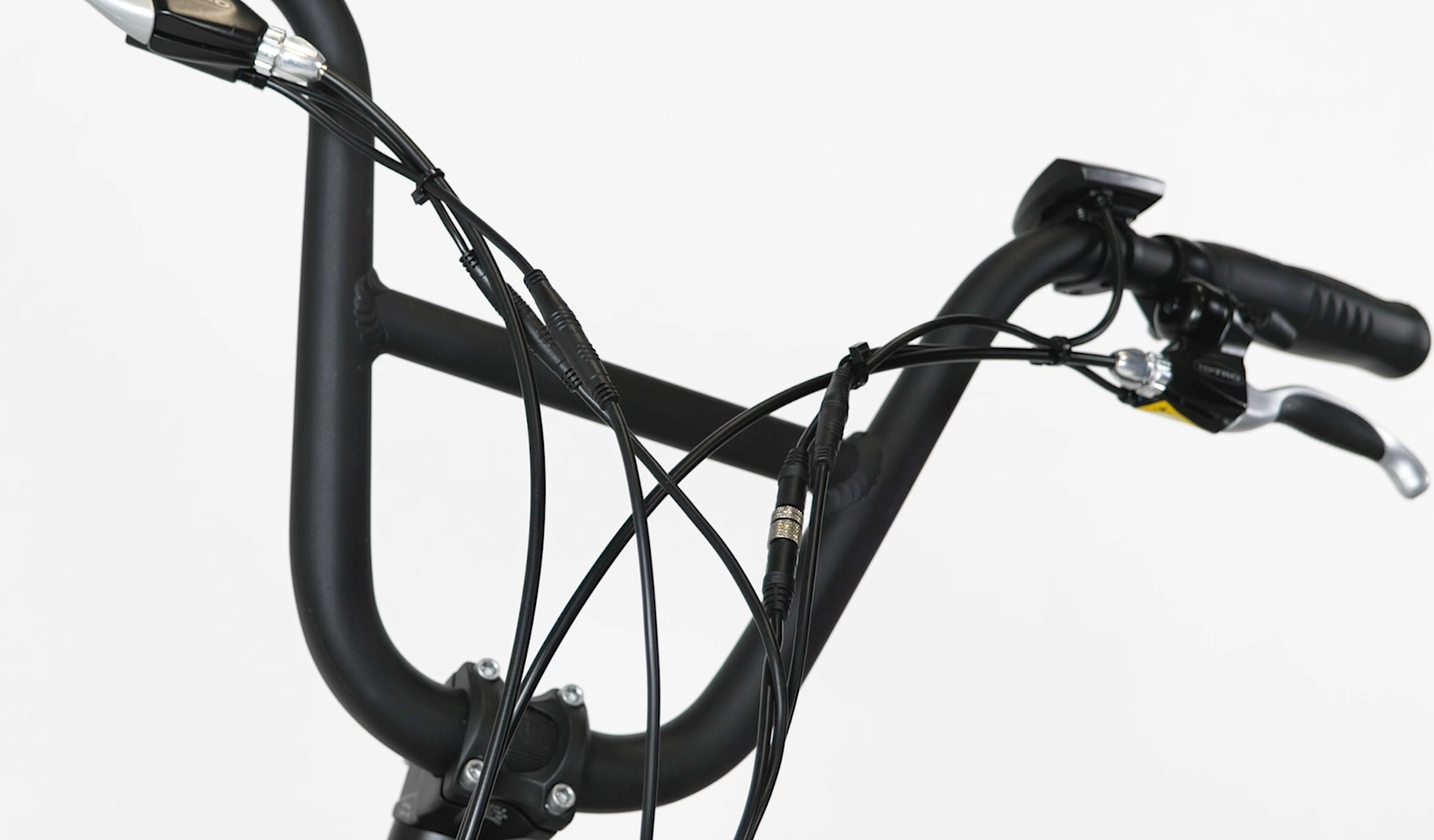
Do not plug in a connector to the wiring harness if it does not match in color and shape. Doing so could cause irreparable damage to the connector, the part, or the wiring harness.
-
-
Replace any zip ties that were removed and use flat side cutters to snip off zip tie excess. Ensure the cut is flush and there are no points that could damage cable housing.
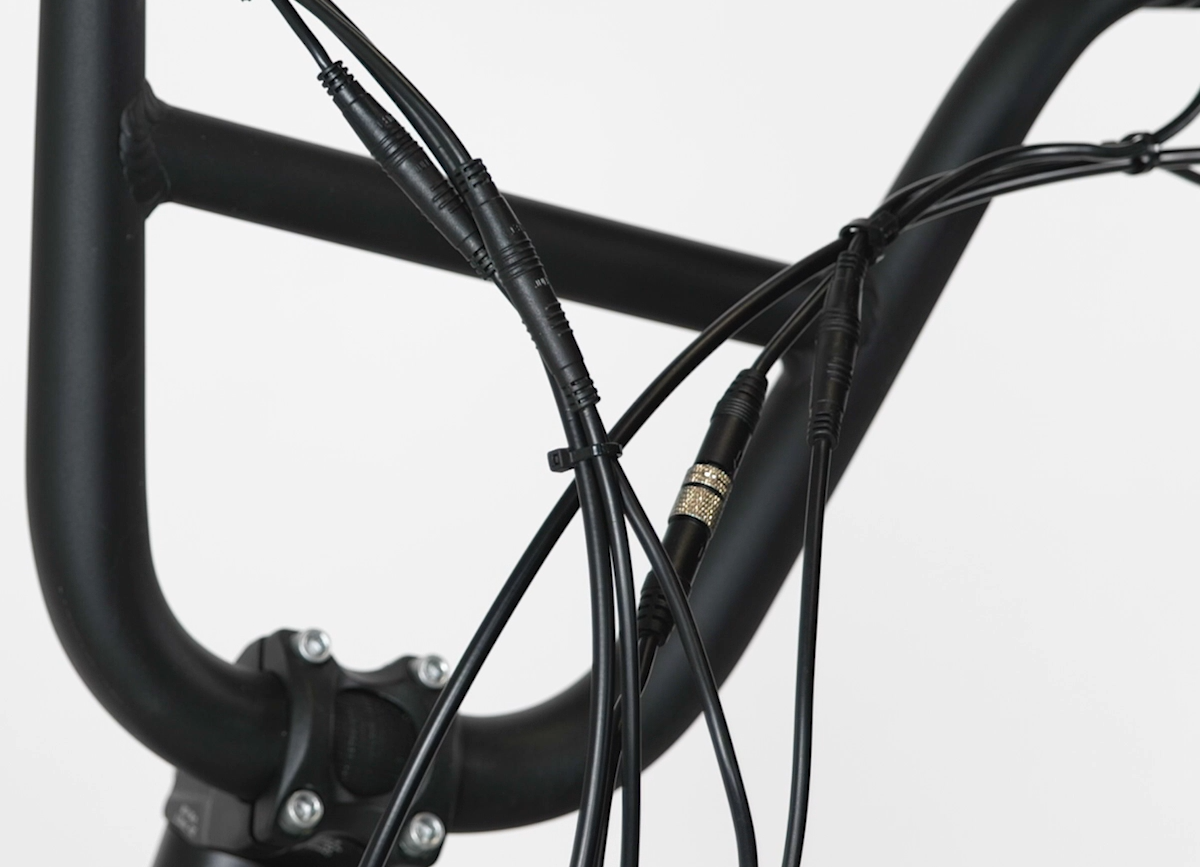
-
Reinstall the cable cover at the front of the bike.
- Reinstall the skid plate, starting with the back bolt near the kickstand.
- Pass the rear skid plate mounting bolt down through the kickstand mounting plate and spacer. Ensure the cables are oriented to afford clearance. Pass the bolt through the skid plate, pass a flat washer onto the bolt end, and thread on the locknut while holding the bolt in place with a 4 mm Allen wrench.
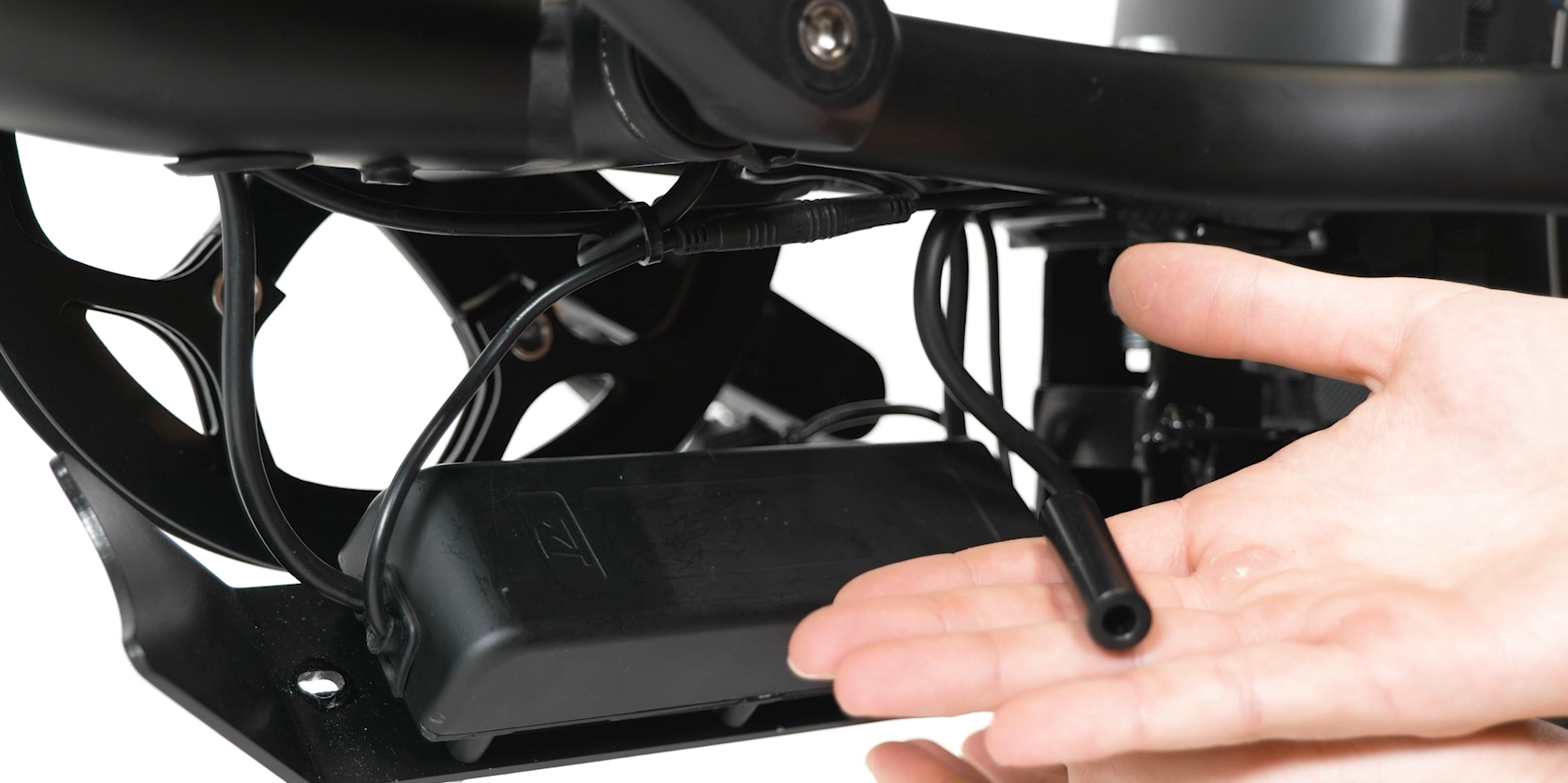
- Pass the split washer and flat washer onto the front skid plate mounting bolt end. Pass the bolt up through the front of the plate and spacer, and carefully thread into the mounting point on the frame, tightening partway (about 3-4 turns).
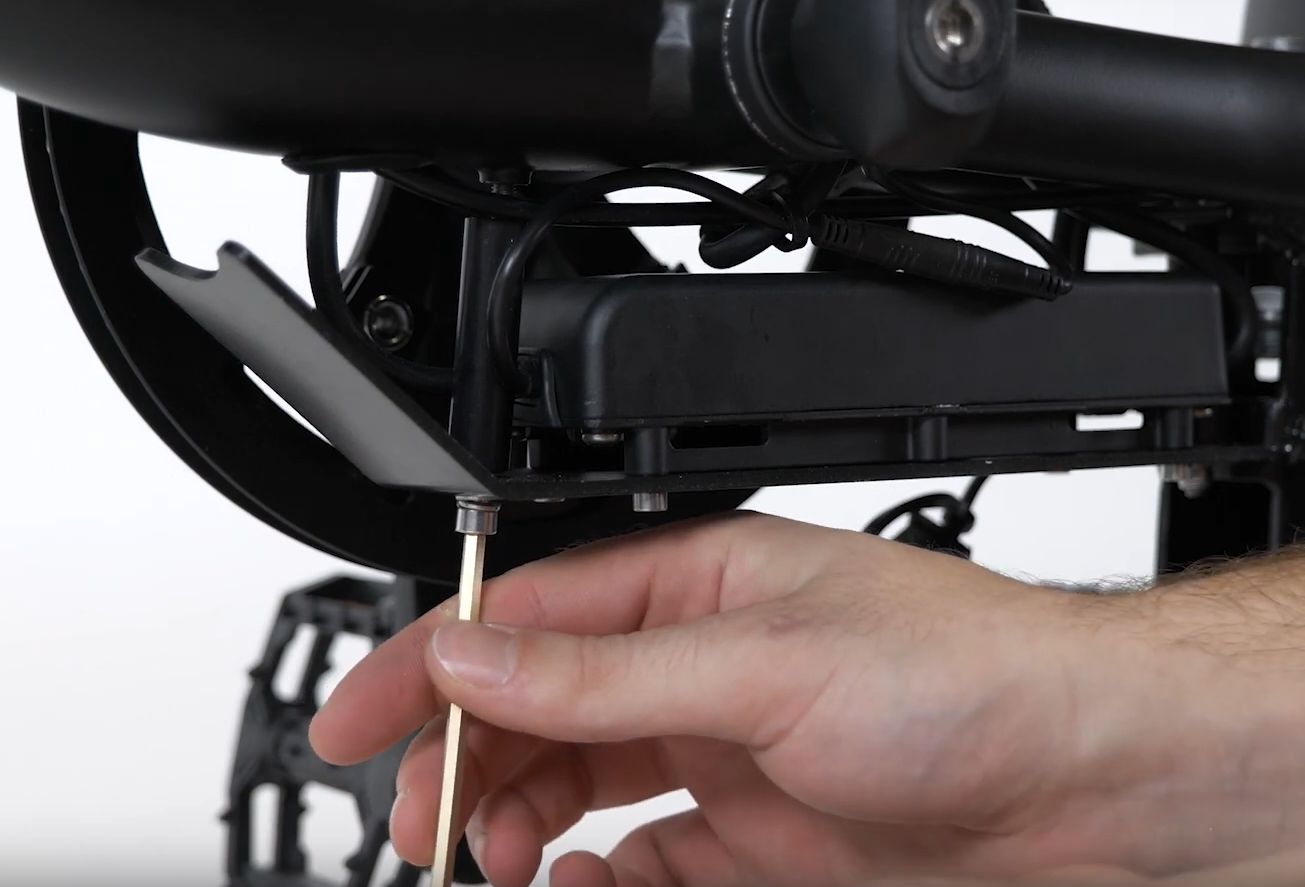
- Tighten both bolts evenly by alternating between them every few turns. Use a 4 mm Allen wrench to hold the back bolt in place and an 8 mm wrench to tighten down the locknut. Use a 4 mm Allen wrench at the front of the bolt. Torque both bolts to 5 Nm.
- Pass the rear skid plate mounting bolt down through the kickstand mounting plate and spacer. Ensure the cables are oriented to afford clearance. Pass the bolt through the skid plate, pass a flat washer onto the bolt end, and thread on the locknut while holding the bolt in place with a 4 mm Allen wrench.
- Check that all cables are free from any moving parts and that the handlebar can turn freely.
- Reinstall the battery, test the bike fully, and have your work inspected by a local, certified, and reputable bike mechanic.
